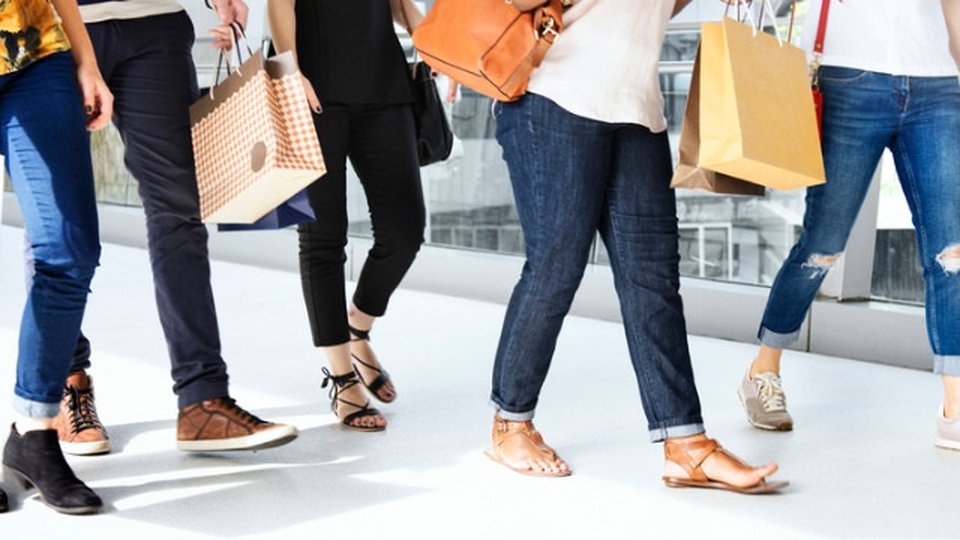Technology
Customer experience in a new retail reality
Ambeshwar Nath, senior vice president, retail, CPG and logistics at Infosys, explains why retailers that find ways to recreate shopping experiences in channels that consumers are migrating to, in a contactless world, will win in the new normal world.

September 18, 2020 by Ambeshwar Nath
The COVID-19 pandemic imposed restrictions on physical distancing and face-to-face engagement that has impacted consumer-oriented industries like retail worse than others. As retailers improvise on the fly, scrambling to serve customers through other channels, the future of the in-store experience is in sharp focus.
After the initial rush of safety measures to protect the lives and livelihoods of employees, retailers then turned their attention to address concerns of consumers. In a rapidly evolving landscape, they are shifting toward contactless service and operations, operating essentials while trying to stay afloat. To be sure, some subsectors like food and essential supplies are overwhelmed with demand, while discretionary categories like apparel and fashion stare at a long road back to recovery.
As the new normal takes shape, consumer expectations and behaviors have also evolved in response to the changed conditions. Concern for the physical health of themselves and their families, over job security and over upcoming payments and deferred purchases will influence consumer behavior. All this points to curbed discretionary spending once economies reopen. The larger question, however, is whether behaviors learnt or reinforced during the current times, will continue beyond the crisis?
Digital shows the way
To answer this question, one needs to look ahead of the curve to the one economy that is slowly returning to normal activity levels – China. Here, offline spending is limping back slowly, but discretionary spending is still lagging, shifts to the online channel are staying 15% higher than pre-crisis levels, and loyalty to offline brands has fallen, offset by higher online engagement. The supplanting of in-person interaction with digital engagement means that organizations who find ways to adapt and realign consumer experiences with emerging customer needs will emerge stronger.
A McKinsey analysis of the 2008 financial crisis shows that organizations leading in customer experience saw a shallower downturn, rebounded more rapidly, and achieved three times the total shareholder returns in the long run compared with the market average. Retailers need to reinvent their current omnichannel offerings for the emerging contactless/low-contact economy, without compromising the customer experience. One way to do this is through the real time tracking of consumer trends and behavioral shifts using data analytics and social media analysis. Insights gathered from data will help in constructing personalized retention plans, messages, and offers that are relevant to customers.
Doubling down on digital can also help step up the effort to boosting online acquisition, for example, by paying closer attention to paid search and enhancing social channels for shopping. Digital community engagement with relevant and contextual content aids retention. Nike China, for example, activated its digital community by offering virtual workouts and saw an 80% increase in weekly active users of its app. The actual digital shopping experience itself must be truly zero friction for speed, convenience, stability, and delivery times. Web pages optimized for digital shopping will create seamless customer journeys by making the highest-selling products easy to find.
Injecting innovation in customer engagement
Some retailers are trying to replicate the in-store experience online. Sales agents help individuals find products that meet their needs virtually and some are even livestreaming experiential content for customer engagement. In China, Taobao Live made it easier for brick-and-mortar retailers to join its livestreaming channel platform, leading to a seven-fold increase in participating merchants in February 2020, compared with January.
Others have also been quick to move towards augmented reality (AR) technologies to help customers see how a certain product would look on them, overcoming purchase reluctance in the process. Jewelry-brand Kendra Scott launched a virtual try-on platform, which uses AR, machine-learning, and computer-vision techniques, to allow shoppers to preview styles in virtual 3-D. Shopify found that conversion rates jumped by two-and-a-half times, when it introduced a feature that enabled merchants to add 3-D models to their product pages which could be viewed in AR. Apparel brands Lacoste, American Apparel, and Uniqlo recently launched virtual showrooms and fitting rooms to allow customers to try products in virtual spaces.
Another retail enabling technology that has gained prominence during the pandemic is voice commerce - voice-assisted technologies which help to make sales through voice recognition technology. It uses existing voice assistants like Alexa, Siri or Google Assistant to place online orders without needing an online check in, for say ordering on Amazon or Walmart. 7-Eleven even added a voice ordering feature to its app to enable delivery of the product.
Cashier-less and staff-free stores are also expected to reimagine the retail landscape, as customers shift to contactless shopping behaviors. A recent survey showed that 87% of surveyed consumers would prefer stores with contactless or self-checkout options. Amazon developed a cashier-less Just Walk Out system that tracks products taken by consumers in a virtual cart and charges directly to their credit cards as they leave the store. 7-Eleven began testing a cashier-less, check-out free store at its corporate headquarters in Irving, Texas early this year that allows its employees to shop at the store using just an app. They also launched a mobile checkout feature that allows shoppers to pay using their smart phones and skip the checkout line totally. As part of the same frictionless retail experience, they opened a pop-up store at the Children's Medical Center at Dallas recently where the hospital staff could use their employee badges to pay for the merchandise that they bought.
Whichever technology they embrace, retailers who find ways to recreate shopping experiences in channels that consumers are migrating to in a contactless world, will win in the new normal world.
Ambeshwar Nath is senior vice president, retail, CPG and logistics at Infosys.
